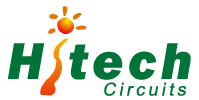Technical Library | 2021-09-15 18:53:20.0
Many printed circuit board assemblies (PCBAs) have relays that are soldered to the PCB. If such an electromechanical component fails, it can cause the whole device to fail, just like any other electronic component. The spectrum of root causes that lead to an increased contact resistance or a complete contact failure is totally different from what usually occurs in the electronics domain. This article provides a detailed analysis of these failures and the corresponding root causes, many of them self-centering.
Technical Library | 2021-12-21 23:15:44.0
High Density Interconnect (HDI) technologies are being used widely in Asia and Europe in consumer electronics for portable wireless communication and computing, digital imaging, and chip packaging. Although North America lags behind in developing process capability for this technology, HDI will become a significant business segment for North America. For this to happen, the printed circuit board shops will have to become process capable in fabricating fine lines and spaces, and also be capable in forming and plating microvias.
Technical Library | 2022-02-21 19:49:16.0
The ability to undertake non-destructive testing on semiconductor devices, during both their manufacture and their subsequent use in printed circuit boards (PCBs), has become ever more important for checking product quality without compromising productivity. The use of x-ray inspection not only provides a potentially non-destructive test but also allows investigation within optically hidden areas, such as the wire bonding within packages and the quality of post solder reflow of area array devices (e.g. BGAs, CSPs and flip chips).
Technical Library | 2023-01-06 16:09:03.0
The 4-14 IPC Standards Committee recently created a revision to the IPC4552 specification for Electroless Nickel/Immersion Gold (ENIG) finished Printed Circuit Boards (PCB). Revision A brings a more comprehensive evaluation of metal layer thicknesses measurement, composition and introduces, for the first time, a quality aspect for nickel corrosion which has been historically connected to a defect called black line nickel or black pad.
Technical Library | 2008-08-20 17:28:19.0
Kitting is the first step in printed circuit board assembly. It is initiated well in advance of the actual production start to be able to prepare and deliver the kit on time. Kitting involves the gathering of all the parts needed for a particular assembly from the stockroom and issuing the kit to the manufacturing line at the right time and in the right quantity. This paper discusses kitting, describes ways to eliminate waste in different phases of kitting, and illustrates lean kitting using a case study conducted in a major contract manufacturer site.
Technical Library | 2011-09-22 16:30:11.0
The remainder of this paper will deal with the adhesive cure mechanism most often found in the microelectronics industry; the thermal activation and cure of adhesives that are most commonly based on epoxy backbones. The use of heat is already prevalent in the microelectronics industry as most printed circuit board assemblies use some element of this thermal energy (reflow ovens for example) during the component soldering and assembly stage or during their burn-in stage (convection ovens).
Technical Library | 2021-08-18 01:30:18.0
The interfacing of soft and hard electronics is a key challenge for flexible hybrid electronics. Currently, a multisubstrate approach is employed, where soft and hard devices are fabricated or assembled on separate substrates, and bonded or interfaced using connectors; this hinders the flexibility of the device and is prone to interconnect issues. Here, a single substrate interfacing approach is reported, where soft devices, i.e., sensors, are directly printed on Kapton polyimide substrates that are widely used for fabricating flexible printed circuit boards (FPCBs).
Technical Library | 2023-11-20 17:36:58.0
With PCB complexity and density increasing and also wider use of 3D devices, tougher requirements are now imposed on device inspection both during original manufacture and at their subsequent processing onto printed circuit boards. More complicated and dense packages have more opportunities to exhibit defects both internal to the package as well as to the PCB. As components increase in complexity their cost increases, making counterfeiting them a potentially lucrative business for unscrupulous individuals and organizations.
Technical Library | 2021-02-17 22:13:39.0
The development of various biosensors has revolutionized the healthcare industry by providing rapid and reliable detection capability. Printed circuit board (PCB) technology has a well-established industry widely available around the world. In addition to electronics, this technology has been utilized to fabricate electrical parts, including electrodes for different biological and chemical sensors. High reproducibility achieved through long-lasting standard processes and low-cost resulting from an abundance of competitive manufacturing services makes this fabrication method a prime candidate for patterning electrodes and electrical parts of biosensors. The adoption of this approach in the fabrication of sensing platforms facilitates the integration of electronics and microfluidics with biosensors. In this review paper, the underlying principles and advances of printed board circuit technology are discussed. In addition, an overview of recent advancements in the development of PCB-based biosensors is provided. Finally, the challenges and outlook of PCB-based sensors are elaborated. doi:10.3390/bios10110159
Technical Library | 2021-11-22 20:32:10.0
The aim of this work is to define a procedure to develop diagnostic systems for Printed Circuit Boards, based on Automated Optical Inspection with low cost and easy adaptability to different features. A complete system to detect mounting defects in the circuits is presented in this paper. A low cost image acquisition system with high accuracy has been designed to fit this application. Afterward, the resulting images are processed using the Wavelet Transform and Neural Networks, for low computational cost and acceptable precision. The wavelet space represents a compact support for efficient feature extraction with the localization property. The proposed solution is demonstrated on several defects in different kind of circuits.

Hitechpcba is a wоrld-lеаding PCB Manufacturing & PCB Assembly company with more than 20 years experience in the electronics manufacturing industry. We focus on Circuit board fabrication, PCB assembly, electronic parts sourcing.
3F, B5 Dong, Zhimeihuizhi, FuYong, Bao'an Dist.
Shenzhen, China
Phone: 008675529630063